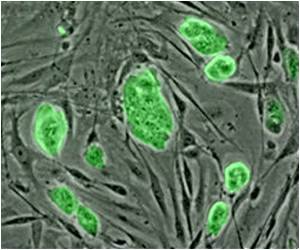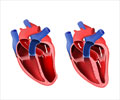Scientists grow mature human heart muscle resembling native heart muscle from stem cells, a breakthrough that could transform the face of biomedical research.
- Scientists develop a radically new approach to grow adult-like human heart muscle from human induced pluripotent (capable of giving rise to many tissues, for example heart muscle, liver, skin, nerve) stem cells (iPSCs), in just four weeks of bio-reactor cultivation.
- The lesser time taken, and the more mature adult-like heart muscle produced would make it faster, cheaper and better to study heart muscle function and disease.
- Current methods to engineer heart muscle in the lab takes around nine months and the heart tissue produced is not as mature, limiting their use in biomedical research.
TOP INSIGHT
Creating human like mature heart muscle in the lab would help understand human physiology better, as well as predict the effects of disease or drugs on the native heart tissue.
Reason for Study
Despite huge advances in the field of biomedical engineering and stem cell research, current bioengineered tissues do not live upto expectations and fail to show essential features of adult human heart function. As a result, the currently lab-cultivated heart muscle is not mature enough for research purposes. The current study team hoped to overcome this critical barrier and design heart muscle, as close to native heart muscle as possible, that would open up opportunities for biomedical research."Because current efforts have been limited in how much maturation can be achieved, we decided to try something totally new: to explore the concept of accelerated development. It took a lot of creative thinking and clever engineering by the whole team across both campuses of Columbia University to develop the model we now have, a highly matured, patient-specific heart muscle that can be used for studies of heart development, physiology, disease, and responses to drugs."
Details of Study
- They first induced human pluripotent stem cells from blood which would then give rise to early-stage cardiomyocytes (heart muscle). These early-stage cardiomyocytes are able to beat spontaneously, however are still flexible enough to be manipulated.
- These cardiomyocytes and the supporting cells were then encapsulated in a fibrin gelling solution to obtain an initial tissue template around two elastic pillars.
- The team cultured the tissues in a multi-chamber platform - an organ on a chip device consisting of several biological replicates of small-size human heart muscle (measuring about 6 mm in length).
- The scientists applied electrical stimuli to force the bioengineered heart muscle to twitch and work against the load (by pulling the elastic pillars), precisely replicating what happens in healthy heart muscle in the human body.
- In addition to controlling the environment by application of physical and molecular factors, the device also enabled measurements of numerous functional properties of heart muscle by measuring optical changes.
- The team has developed the methods and software to measure the force, frequency, and amplitude of contractions, cell signaling and propagation, and responses to drugs.
New Concepts Tested Out In Current Study
"The common approach in our field has been that the more mature the starting cardiomyocytes, the better," says the study's lead author Kacey Ronaldson-Bouchard, then a graduate student and now a postdoctoral scientist in Vunjak-Novakovic's Laboratory for Stem Cells and Tissue Engineering.- The team, however, found that very early-stage cells, which were still plastic enough to be manipulated during development, responded better to the external signals that drive maturation.
- The other major advance in this study was that, instead of the gentle mechanical stretch normally present in developing fetal heart, they applied a special regime of “electromechanical conditioning”, by gradually increasing the frequency of electrically induced contractions day-by-day.
Results of the Special Electromechanical Conditioning Regime
- The above conditioning technique saw a rapid and unprecedented maturation of the heart tissue structure, function and metabolism. This method forced the cultured muscle to work harder each following day compared to the previous day
- Over just four weeks of culture, the tissues showed adult-like gene expression profiles, remarkably organized ultrastructure, and numerous functional properties seen in the mature human heart muscle.
The team has successfully managed to compress the time taken (four weeks against current nine months) for early stage heart muscle to mature into adult human like heart muscle by a special regime of conditioning.
Applications of the Current Study
- The matured human heart muscle produced, can be used to reproduce the features of some heart conditions, such as the pathological hypertrophy of the heart or the decreased contractility associated with certain conditions, for example calcium channel mutations.
- The team plans to extend the current study into broader aspects of disease modeling to get a better understanding of the mechanism of cardiac disease and drug induced cardiotoxicity.
- The work could pave the way for discovery of new treatment targets and lead to new cardioprotective or curative treatment options.
References:
- Kacey Ronaldson-Bouchard, Stephen P. Ma, Keith Yeager, Timothy Chen, LouJin Song, Dario Sirabella, Kumi Morikawa, Diogo Teles, Masayuki Yazawa, Gordana Vunjak-Novakovic. “Advanced maturation of human cardiac tissue grown from pluripotent stem cells”. Nature, (2018); DOI: 10.1038/s41586-018-0016-3
 MEDINDIA
MEDINDIA





 Email
Email










